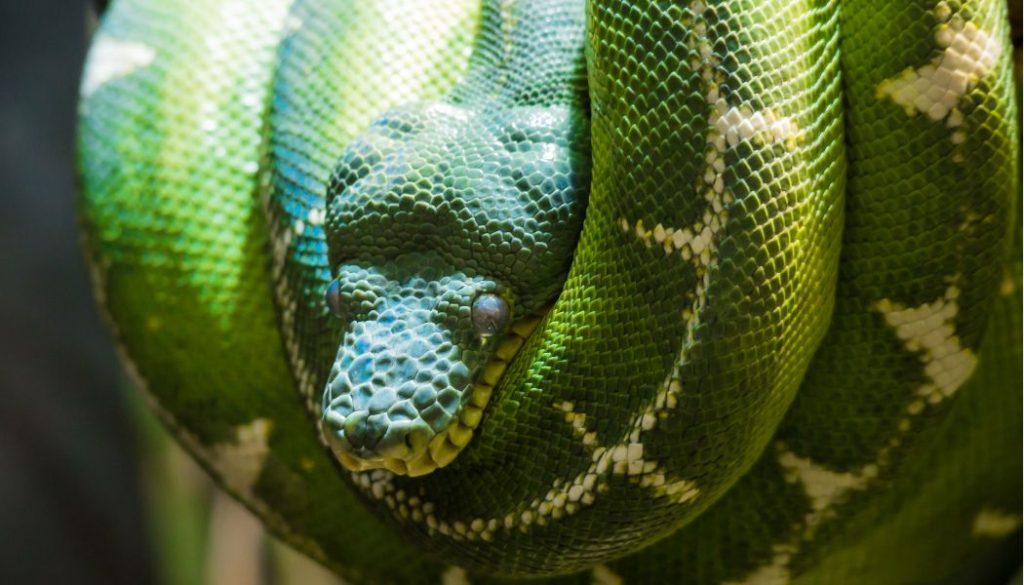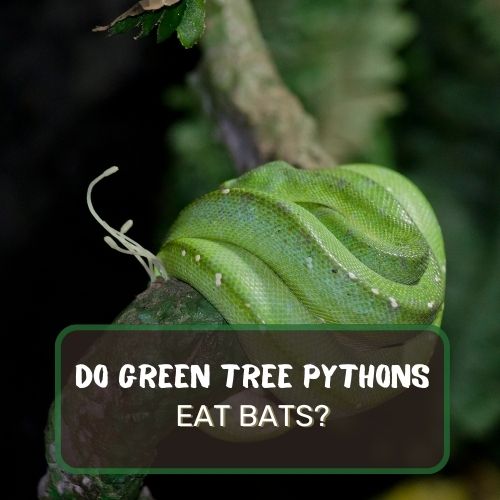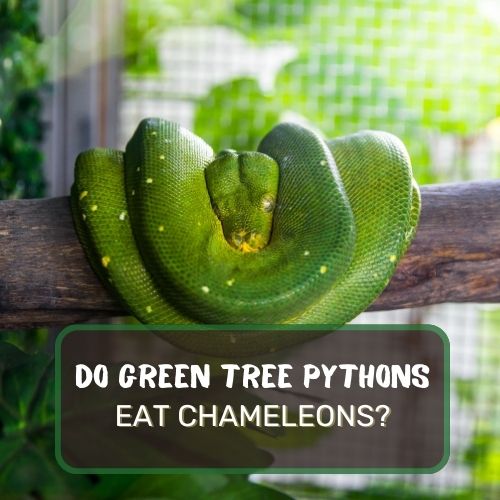Hey there, fellow snake enthusiasts! Ever wondered, “Can green tree pythons live together?” Well, you’re not alone, and this article aims to shed some light on that very question.
Green tree pythons prefer to live solo. In the wild, they’re solitary creatures, each claiming their own territory in the treetops. Housing them together can lead to stress, fights, and even severe health issues.
While some exceptions exist, like short-term cohabitation for breeding, the risks often outweigh the benefits. It’s essential to consult with professionals if you’re considering attempting this.
We’ll delve into the natural solitary behavior of these vibrant reptiles and explore the physical and health risks of housing them together.
We’ll also touch on the instances where cohabitation might work and offer some tips for those daring enough to try.
So, if you’re pondering a pythonesque roommate situation, keep reading to get the lowdown. Let’s slither into it!

Table of Contents
- 1 The Lone Ranger: Green Tree Pythons are Solitary by Nature
- 2 Physical Risks: What Happens When They Live Together?
- 3 Health Risks: Stress and Disease
- 4 Sexual Dimorphism and Breeding Considerations
- 5 Instances Where Cohabitation Works
- 6 Tips for Those Who Still Want to Try Cohabitation
- 7 Final Word
- 8 FAQ
The Lone Ranger: Green Tree Pythons are Solitary by Nature
Let’s set the stage first. Picture the lush rainforests of Australia, Indonesia, and Papua New Guinea. These environments serve as the playground and home to our slithering friends, the green tree pythons.
However, don’t be fooled by the vibrant scenery. These snakes are more of the “lone wolf” types rather than social butterflies.
In the wild, green tree pythons are notoriously solitary creatures. You see, it’s not a party in the treetops; it’s more like an exclusive VIP club where each python commands its own territory.
They prefer their own space and generally dislike intruders. To quote the experts in herpetology and green tree pythons, cohabitation is more of an exception than a rule.
So why does this solitary nature matter? Because it sets the foundation for understanding how they’ll behave in captivity.
Simply put, if they’re used to flying solo in the wild, chances are they’d want to continue that lifestyle even in a cozy, controlled environment like your home.
Now, you might think, “Hey, what’s the harm in trying?” Ah, let’s venture into that aspect, shall we?
Physical Risks: What Happens When They Live Together?
Imagine throwing two complete strangers into a room and locking the door. Odds are, things might get a bit dicey, right? Now apply this concept to green tree pythons, and you’ve got yourself a potential snake showdown.
Sharing a living space can be stressful for these creatures, leading to physical confrontations. And it’s not like a petty squabble; we’re talking about fights that can result in injuries or even death.
Picture bite marks, wounds, and a whole bunch of stress—none of which sounds like a fun time, does it?
Even more concerning is the risk of misdirected feeding responses. In layman’s terms, one snake might mistake the other for food during feeding times. Yup, it’s as gruesome as it sounds.
This behavior isn’t just a manifestation of aggression; it’s also a sign that the environment is causing undue stress and confusion.
And let’s not forget, the bigger or more aggressive snake could start dominating the smaller or more submissive one. This could lead to the submissive snake not getting enough food or basking time, leading to severe health issues over time.
So, the physical risks aren’t just a mere hypothetical. They’re a real, serious concern that should make any responsible pet owner think twice about housing green tree pythons together.
What’s the takeaway here? Well, if you’re an aspiring green tree python owner or even a seasoned snake aficionado, it’s essential to weigh the risks carefully.
Because in the quest to answer, “Can green tree pythons live together?”, the well-being of these beautiful creatures should always be the top priority.
Remember, it’s always better to consult with veterinarians and herpetologists to get tailored advice on your specific situation. Trust the experts; they’ve got the science and experience to back it up.
Health Risks: Stress and Disease
Let’s talk about something we all dread—health risks. You see, when green tree pythons are forced to share their personal space, stress levels can skyrocket. Now, stress isn’t just an emotional response; it has some pretty nasty physical repercussions too.
First off, a stressed-out snake is more prone to diseases. You know how you’re more likely to catch a cold when you’re stressed? Same deal for these pythons.
Stress can weaken their immune system, making them susceptible to infections and illnesses that they’d otherwise fend off with ease.
Secondly, when you’re housing multiple snakes together, you’re essentially creating a petri dish for disease. One sick snake could quickly turn into an epidemic in a cohabitation scenario. Think respiratory infections, fungal infections, and parasites. Ew, right?
And it’s not just about diseases. Stress can lead to a loss of appetite and even disrupt their shedding process. When a snake can’t shed its skin properly, it can lead to a host of other complications like skin infections.
So, a shared living space? It might sound like a fun idea initially, but when you dive into the health risks, it loses its charm real quick.
Sexual Dimorphism and Breeding Considerations
Alright, now let’s jump into another complex realm: sexual dimorphism and breeding. Even if you’re not a biologist, you probably know that male and female animals often have differences beyond just the reproductive organs.
With green tree pythons, these differences extend to size and temperament.
Generally speaking, females are larger than males. Now, why does this matter? Well, in a shared space, the bigger female might dominate her smaller male counterpart, affecting his health and well-being.
Dominance isn’t always about aggression; sometimes, it’s about hogging resources, like prime basking spots.
Now, if you’re considering housing them together for breeding purposes, that’s a whole different ball game. Cohabitation is often attempted during the breeding season, but even then, it’s not without its risks.
Mating in itself can be a stressful process, and if the animals are already stressed from sharing a space, it could result in unsuccessful breeding attempts.
Moreover, it’s essential to separate the pair after breeding to minimize stress and potential confrontations. Keep in mind, breeding should always be guided by scientific knowledge and veterinary advice.
Breeding isn’t for amateurs; it’s a detailed process that requires a good understanding of the animals and their needs.
So, while the allure of baby green tree pythons might be strong, it’s crucial to consider whether your setup is equipped to handle the intricacies of snake breeding. Always remember, an ounce of prevention is worth a pound of cure.
Instances Where Cohabitation Works
Okay, okay, I hear you. “Isn’t there ever a time when green tree pythons can live together?” Well, you’re in for a bit of good news. There are specific instances where cohabitation might actually work, albeit temporarily and under strict supervision.
For example, during breeding season, males and females are often introduced to each other for short periods. But even then, it’s essential to keep a vigilant eye on them to ensure that neither snake becomes overly stressed or aggressive.
And remember, this cohabitation is temporary and serves a specific purpose.
Another instance could be when the snakes are juveniles. Young green tree pythons are generally less aggressive and territorial than their adult counterparts. Some keepers have successfully housed juveniles together, but this is typically a short-term arrangement until they mature.
But let me emphasize—these are exceptions, not the rule. Successful cohabitation stories are often the result of meticulous planning, constant monitoring, and a deep understanding of each snake’s behavior and needs.
Tips for Those Who Still Want to Try Cohabitation
If you’re still leaning towards giving cohabitation a shot, hold your horses. Let’s go over some harm-reduction strategies that could tip the scales in favor of a more harmonious living arrangement.
First and foremost, consult a vet or a herpetologist. It’s not just about diving in; you’ve got to do your homework and get professional advice tailored to your specific situation.
Next, consider the size and setup of the enclosure. A more spacious environment with multiple basking spots and hides can reduce stress and territorial disputes. Think of it as giving each snake its own “room” within the enclosure.
Feeding time is crucial. Always feed the snakes separately to minimize the risk of fights or misdirected feeding. Some owners even remove the snakes from their shared enclosure and place them in separate spaces during mealtime.
Regular health checks are a must. Keep an eye out for signs of stress, like loss of appetite or problematic shedding. At the first sign of trouble, it may be time to reconsider your cohabitation experiment.
So there you have it. If you’re dead-set on trying to house green tree pythons together, at least now you’ve got some strategies to mitigate the risks involved. But always remember, when in doubt, consult the experts. It’s not just about what you want; it’s about what’s best for these fascinating creatures we love so much.
Final Word
So, you’ve journeyed through the ins and outs of whether green tree pythons can live together.
By now, you know that these stunning reptiles are generally solitary by nature and that cohabitation comes with its share of risks, from stress to health issues.
However, you also learned that there are rare instances where cohabitation might work, and some tips to make it safer if you decide to give it a try.
Always remember, the well-being of your scaly friend comes first.
Continue to educate yourself and consult experts to provide the best environment for your green tree python. Happy snake-keeping!
FAQ
I see you’ve still got some burning questions about green tree pythons and whether they can cohabitate. So, let’s knock these out, shall we?
How many green tree pythons can live together?
In a nutshell, the best practice is to keep them solo. There are some exceptions like short-term cohabitation for breeding or housing juveniles together, but generally, it’s not recommended to house multiple adult green tree pythons together.
Are green tree pythons communal?
Nope, they’re more like the introverts of the snake world. These creatures value their alone time and are naturally solitary animals. Communal living is not their jam.
How aggressive are green tree pythons?
They’re not typically aggressive, but they can become territorial, especially when their personal space is invaded. Aggression can also manifest during stressful situations, like forced cohabitation.
Is a green tree python a good first snake?
Ah, good question! Green tree pythons are incredibly captivating, but they’re not usually recommended for first-time snake owners. They have specific care requirements and can be a bit more finicky about their environment. If you’re a beginner, you might want to start with a more forgiving species and work your way up.




0 Comments